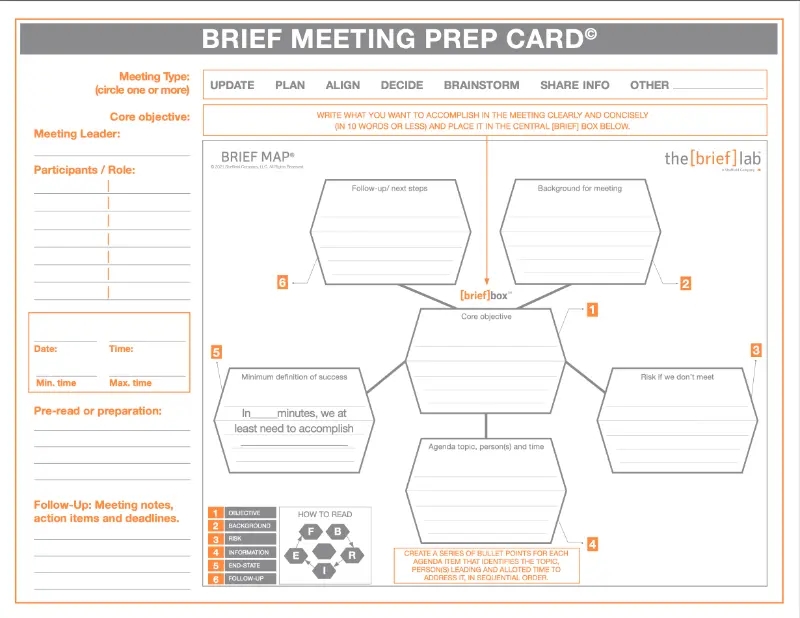There are myriad resources available for professionals who want to improve their presentation skills. But, before seeking any tactical advice about PowerPoint, props, or demeanor, do the most important thing: Make sure your presentation has a clear point.
No matter how accomplished a leader is, he must ask himself: “What, is the one thing I want my audience to DO or THINK at the conclusion of the presentation?”
If you don’t have a one-sentence answer to that question, your presentation does not have a point. Or, just as bad, your point may be crowded out by superfluous information.
Why is Clarity So Important?
Clarity is important because every communication leads toward action, either in thought or in behavior. Each time we speak to clients or colleagues without a clear, intentional message we miss an opportunity to influence another person’s actions or decision making. When we talk too long or too much and without clarity, the path for them to act becomes blocked and confused. They don’t know what to do and often don’t act at all.
The ability to make a compelling, effective presentation is a differentiator, a competitive edge. If you’ve listened to members of your own team deliver less-than-stellar sales pitches or go off-topic when telling your company’s story, you know what it means to miss an opportunity to make an impact.
In my work with Fortune 500 clients, I’ve witnessed quite a few presentations that lacked a clear point. Here are a handful of reasons for a lack of clarity:

Fear
Some people actually are hesitant to make a clear point or deliver a concrete recommendation for fear of offending someone. They believe they can gently guide their listeners to a conclusion without overtly making a point … they hope their listeners will somehow “get it.” If you are not 100% clear in your presentation, it’s as bad as having no point at all. Put yourself in the place of your listeners: We’ve all endured presentations after which we thought: “I’ll never get that 30 minutes back.”
Presenters who knock it out of the park are the ones who are absolutely committed to their message or recommendations. Don’t be afraid to have a point and deliver it clearly and succinctly.
Too Much Information
Many presenters truly believe that more information is better. But, their presentations usually are filled with disconnected thoughts and excessive details. They believe just one more piece of information will be the one that convinces their listeners. In our Brief Lab courses we teach “trimming” as a tool to eliminate unnecessary detail and include only the essentials. Keeping your presentation simple and to the point is what leads your audience to action. All the extra detail simply confuses them.
Other people are oblivious to the fact that people have other things to do.
In these cases, the presenter must understand — and truly believe — that the audience really will tune them out after a very short period of time. They must learn to identify and remove superfluous information. No one remembers a 50-slide presentation. Trim the fat and focus on the essentials.
Failure to Prepare
Then there are people who underestimate the opportunity and simply fail to prepare. This is entirely preventable. You may know your subject inside and out, but unless you give every presentation the respect it deserves, you are at risk of being pulled off-track and not delivering your message.
Proper preparation may take days, an hour, or five minutes. Not every “presentation” is delivered at a podium in front of a room full of people. Some of our most important speaking opportunities are one-on-one conversations with a boss, client or colleague; emails or email replies (if you want them to be read); voicemail messages (if you want a response); and status reports (if you want to make an impact).
Think of Your Audience
Before that conversation, email, voicemail, or status report, take a few minutes to clear your mind, make a few notes, and ask yourself the same question you’d ask if you were presenting to a crowd:
“What, is the one thing I want my listeners to DO or THINK at the conclusion of this conversation?” Then, tailor your message or presentation to that idea only. Your audience will respect you for it.
If you and your team want to learn how to present ideas by mastering the art of a concise and compelling narrative, check out the Brief Online Boot Camp, a course I developed to help senior executives and their teams become even more effective communicators. Based on the award-winning book BRIEF: Make a Bigger Impact by Saying Less, it’s the same methodology we teach to elite special operation units and Fortune 500 leadership teams.
About the author: Joe McCormack is on a mission to help progressive organizations master concise communication. Joe works with Fortune 500 companies and elite special operations units, is the founder of The Brief Lab and author of Brief: Make a Bigger Impact by Saying Less. Follow us on Twitter @TheBriefLab

